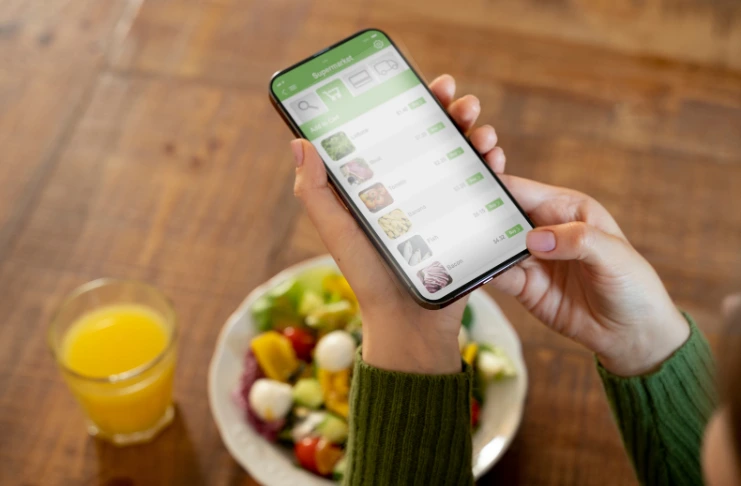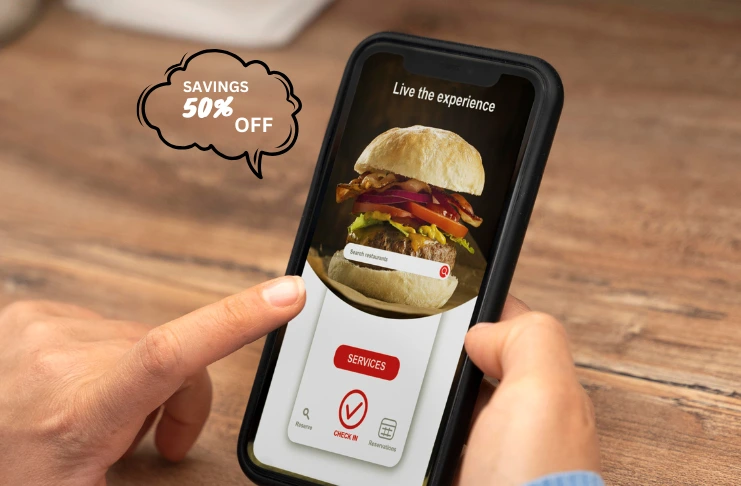In today’s digital-first food industry, cloud kitchens have redefined how restaurants operate, eliminating the need for physical dining spaces and relying entirely on online marketing and delivery platforms to attract and retain customers. With the U.S. and global cloud kitchen market both projected to reach massive numbers, competition in the industry is intensifying, making effective cloud kitchen marketing the key to long-term success.
Even though starting a cloud kitchen business is relatively straightforward, it is not the only thing that would keep the sales up. Therefore, apart from following the regular operations that are necessary for a cloud kitchen, businesses also need to establish effective cloud kitchen marketing strategies for success.
This comprehensive guide explores these ideas and strategies to get your restaurant ‘cooking’.
Why Effective Marketing is Crucial for Cloud Kitchen
Without physical storefronts, marketing becomes the primary driver of the food business success. Unlike traditional restaurants, cloud kitchens depend entirely on effective digital marketing strategies to do restaurant business, build brand awareness, and generate orders.
- Most consumers prefer to order directly from a restaurant rather than through third-party platforms, emphasizing the need for marketing strategies that attract direct orders.
- Restaurants with strong digital marketing generate substantially higher revenue than competitors with minimal online presence, highlighting the importance of a solid marketing strategy for cloud kitchen businesses.
An effective marketing strategy for cloud kitchen businesses drives visibility, builds trust, and creates the digital storefront that replaces traditional physical restaurant locations.
Steps to Build Your Cloud Kitchen Brand Identity
A strong, memorable brand identity is essential to make your cloud kitchen stand out in a competitive digital marketplace. Since your customers never physically visit your establishment, crafting a powerful brand that resonates across digital touchpoints is crucial.
Key Strategies for Building a Strong Brand Identity:
- Create a compelling brand story that connects emotionally with your target audience, helping them understand the essence of your cloud kitchen.
- Develop a distinctive visual identity, including a professional logo and consistent design elements that make your brand instantly recognizable.
- Craft a unique value proposition that highlights what makes your cloud kitchen different from competitors, whether it’s your menu, delivery speed, or customer service.
- Ensure brand consistency across all your digital platforms—from your website and social media profiles to delivery apps and packaging.
Your brand identity serves as the foundation for all marketing efforts, creating recognition with loyal repeat customers, who never physically visit your establishment.
- Optimize Your Online Presence

Your digital presence serves as the virtual storefront in the cloud kitchen business model. To ensure your marketing efforts are successful, follow these steps:
- Build a professional, mobile-optimized website with online ordering capabilities, providing a seamless ordering experience for your customers.
- Claim and optimize your Google Business Profile to ensure accurate information and increase visibility in local searches.
- Implement local SEO strategies to appear in “near me” searches, ensuring your cloud kitchen is found by local customers actively looking for delivery options.
- Create comprehensive digital menus with appetizing descriptions and professional food photography to entice potential customers and showcase your offerings.
A strong online presence is a crucial element in any marketing strategy for cloud kitchen ventures. As 77% of diners visit a restaurant’s website before dining in or ordering takeout or delivery, it is essential for your cloud kitchen to stand out digitally and attract more customers online.
- Food Delivery Apps for Cloud Kitchen Marketing

While third-party delivery platforms offer valuable exposure, they should be strategically incorporated into your marketing approach as they lead to driving orders and increasing brand visibility.
Key Strategies for Leveraging Food Delivery Apps:
- Optimize your listings with compelling descriptions and professional photos
- Analyze performance data across platforms to identify opportunities
- Use delivery platforms as customer acquisition channels while developing your own ordering system
Third-party delivery platforms account for a significant majority of all delivery orders in the U.S., making them a critical channel for marketing. These platforms play a key role in driving customer acquisition and increasing brand awareness and customer preferences, aligning with the overall marketing strategy for cloud kitchen businesses.
- Develop Direct Ordering Channels

Building your own ordering system reduces commission costs and provides valuable customer data for marketing.
- Implement an online ordering system on your website using digital ordering platforms.
- Offer exclusive incentives for direct orders to shift customers from third-party platforms
- Collect customer contact information for future marketing
Restaurants with direct ordering systems see substantially higher profit margins on those orders compared to third-party platform orders, making it an essential part of any marketing strategy for cloud kitchen businesses.
- Leverage Compelling Content Marketing Techniques

Content marketing builds authority and drives organic traffic to your cloud kitchen or online business directory.
- Start a food blog featuring recipes and behind-the-scenes content
- Create short-form videos showcasing your food preparation
- Develop downloadable resources like meal planning guides
- Share customer testimonials and success stories
- Produce content that addresses your target audience’s interests and pain points.
Content marketing generates three times more leads than traditional marketing while costing 62% less, making it ideal for marketing with limited budgets.
- Implement Email Marketing Campaigns

Email marketing provides direct communication with customers for your marketing strategy.
- Build an email list through website sign-ups and customer orders
- Segment your email audience for targeted promotions
- Send regular newsletters featuring menu updates and promotions
- Implement automated email sequences for order confirmations and follow-ups
- Track email performance metrics to optimize future campaigns
Email marketing delivers an average ROI of $36 for every $1 spent, making it one of the most cost-effective marketing strategies for cloud kitchen businesses.
- Harnessing the Power of Social Media

Social media platforms offer visual-centric channels that are perfect for showcasing your cloud kitchen’s culinary creations.
- Focus on Instagram and TikTok for food-focused visual content
- Develop a consistent posting schedule with varied content types
- Engage with followers through comments and user-generated content
A study found that 42% of users consider a restaurant’s social media presence when deciding where to dine. Additionally, a lot of millennial diners actively avoid restaurants with a weak Instagram presence, highlighting the importance of consistent and engaging content.
- Utilize Influencer Partnerships

Collaborating with food influencers extends your marketing reach to engaged audiences.
- Partner with local food bloggers and social media influencers
- Offer sample meals in exchange for authentic reviews
- Create exclusive influencer discount codes to track campaign performance
- Consider micro-influencers with highly engaged niche audiences
- Develop long-term relationships with influencers who align with your brand values
Most consumers trust recommendations from influencers and online reviews when purchasing food, making influencer marketing a key component of marketing success.
EXPERT INSIGHT
| Influencer marketing has become an essential strategy for restaurants aiming to enhance their visibility and attract new patrons. Kate Finley, a renowned social media marketing expert, emphasizes the importance of integrating influencers into a restaurant’s marketing plan. She advises, “Collaborating with influencers allows restaurants to tap into new audiences and build authentic connections that traditional advertising may not achieve.” |
- Implement Loyalty and Referral Programs

Retention marketing costs significantly less than acquisition, making these loyalty rewards programs essential for cloud kitchen businesses.
- Design a simple, valuable loyalty program that rewards repeat orders
- Offer tiered rewards to encourage increased spending
- Create referral incentives that benefit both existing and new customers
Loyalty program members typically spend more per order and order more frequently than non-members, driving higher revenue and increasing the effectiveness of your marketing.
- Optimize for Local Search

Local SEO helps your cloud kitchen appear in relevant searches from nearby customers.
- Research and incorporate location-specific keywords in your website content
- Create location-specific landing pages if serving multiple areas
- Build local citations across online directories and review sites
- Encourage and respond to Google reviews
Nearly half of all Google searches have local intent, making local SEO crucial for cloud kitchen marketing success.
- Data Analytics for Marketing Decisions

Data-driven decision-making should guide your cloud kitchen marketing strategy.
- Track key performance metrics across all marketing channels
- Analyze customer ordering patterns and preferences
- Use A/B testing to optimize marketing messages and offers
- Monitor competitor pricing and promotions
A study by Hospitality Tech found that 68% of hotels and restaurants reported increased customer satisfaction and retention rates after implementing data-driven marketing decisions rather than relying on intuition alone.
- Create Promotional Offers That Drive Orders

Strategic promotions can boost revenue, encourage customers and attract new customers to your cloud kitchen.
- Design limited-time offers that create urgency
- Bundle complementary menu items for increased average order value
- Implement strategic discounting during slow periods
- Create holiday and seasonal promotions that align with customer interests
- Track promotion performance to identify the most effective offer types
Limited-time offers typically generate more orders than everyday discounts for cloud kitchen businesses.
- Develop Strategic Partnerships

Collaborations with complementary businesses expand your cloud kitchen’s marketing reach.
- Partner with local businesses for cross-promotional opportunities
- Collaborate with event planners for catering opportunities
- Create co-branded menu items with local food producers
- Develop corporate meal programs for local businesses
- Establish relationships with community organizations
Strategic partnerships can deliver higher customer acquisition rates at lower costs compared to traditional marketing channels, making them a valuable component of your business.
- Implement Sustainable Practices as Marketing Assets

Eco-friendly initiatives resonate with modern consumers and strengthen your cloud kitchen brand.
- Use sustainable packaging and highlight this in marketing materials
- Source ingredients locally and share your supply chain story
- Implement food waste reduction programs and communicate the impact
- Consider carbon-neutral delivery options
- Donate excess food to local charities and share these efforts with customers
For example, a 2024 survey found that most American customers are willing to pay more for sustainable products
- Craft Targeted Advertising Campaigns

Digital advertising allows precise targeting for your cloud kitchen marketing budget.
- Implement Google Ads campaigns targeting location-specific keywords
- Retarget website visitors who didn’t complete orders
- Test different ad formats and messaging to optimize performance
Well-executed digital advertising delivers strong ROI for cloud kitchen businesses when properly targeted and optimized.
- Host Virtual Events and Experiences

Virtual experiences create engagement opportunities for your cloud kitchen brand.
- Host virtual cooking classes featuring your chef and signature dishes
- Develop interactive experiences like live Q&A sessions with your culinary team
- Offer private virtual events for corporate clients
Studies highlight that virtual events, such as workshops and Q&As, allow organizers to connect with a broader audience, suggesting a potential for increased engagement compared to traditional social media content.
- Managing Your Online Reputation

A top customer relationship management and strong online reputation is critical for Cloud Kitchen’s online sales and marketing success.
- Monitor reviews across platforms, including Google, Yelp, and delivery apps
- Implement customer feedback systems to address issues before they lead to negative reviews
- Create recovery processes for resolving customer complaints
- Measure Marketing ROI for Strategy Optimization

Continually evaluating performance ensures maximum return on your cloud kitchen marketing investment.
- Establish clear KPIs aligned with business objectives
- Calculate customer lifetime value to determine appropriate marketing spend
- Reinvest in high-performing channels and tactics
Restaurants that regularly review marketing strategies achieve higher revenue growth than those with static approaches.
Stay Ahead of Cloud Kitchen Industry Trends
The cloud kitchen industry continues to evolve rapidly, requiring marketers to stay informed.
- Follow industry publications and research reports
- Network with other cloud kitchen operators to share insights
- Test emerging marketing channels and technologies
Successful cloud kitchen businesses regularly adapt their marketing strategies for cloud kitchen operations based on industry trends.
Build a Cloud Kitchen Marketing Roadmap
A strategic roadmap ensures coordinated, effective implementation of your cloud kitchen marketing plan.
- Establish clear short-term and long-term marketing objectives
- Create a monthly content and promotion calendar
- Allocate marketing budget across different channels based on performance
- Schedule regular performance reviews and strategy adjustments
- Identify key milestones and growth targets
Cloud kitchen businesses with documented marketing strategies are much more likely to report success than those without formal plans.
Conclusion
The cloud kitchen industry is continuously reshaping the traditional restaurant marketing landscape, offering new opportunities and challenges for food entrepreneurs. To stay ahead, cloud kitchen marketing requires a multi-channel approach that embraces digital innovation while staying focused on the fundamentals: exceptional food, high quality images, responsive customer service, and consistent brand experiences.
The most successful cloud kitchen operations will be those that view marketing not as an expense but as a strategic investment in building lasting customer relationships and brand equity. With thoughtful implementation of these cloud kitchen marketing ideas, your business can create a sustainable competitive advantage in an increasingly crowded marketplace.
Implement these marketing strategies for cloud kitchen businesses outlined in this guide and let it COOK!
Frequently Asked Questions
1. How do I market my cloud kitchen business?
Market your cloud kitchen by leveraging social media, food delivery apps, influencer collaborations, and SEO to boost visibility. Engage existing customers first with promotions, loyalty programs, and community interactions while refining strategies through feedback and analytics.
2. What is the cloud kitchen concept?
A cloud kitchen (also called a ghost kitchen, dark kitchen, or virtual kitchen) is a delivery-only restaurant that operates without a physical dining space. It prepares food exclusively for online delivery via orders through food delivery platforms like Uber Eats, DoorDash, Swiggy, and Zomato or direct orders via a website or app.
3. How to find customers for cloud kitchen?
For cloud kitchen, find customers through Facebook groups, promoting meal offers, run Google Ads for “best food delivery near me”, partner with delivery apps to get featured on homepages, offer subscription meal plans for regular customers, and use email marketing to send discounts & updates.
4. How do cloud kitchens make money?
Cloud kitchens generate revenue through online food orders via delivery apps, direct orders from their own website or social media, multiple brands or virtual brands operating from a single kitchen, B2B partnerships (e.g., catering for offices, events, or meal subscriptions), and shared kitchen spaces where multiple food brands operate from the same location, reducing costs.
5. Who is the target market or audience for cloud kitchens?
The target audience for cloud kitchen includes young professionals & millennials (frequent users of food delivery), busy families & working parents (seeking convenience), ollege students (affordable and fast meals), health-conscious consumers (demand for healthy meal plans), corporate employees (ordering office lunches), and late-night eaters (demand for 24/7 food delivery).
6. How do I market my Ghost kitchen?
To market a Ghost kitchen, build an online presence & do social media marketing, list on delivery platforms, collaborate with influencer & food bloggers, create customer retention strategies, and partner with other brands & practice offline marketing.
7.What food is most ordered in cloud kitchens?
The most ordered food in cloud kitchens is Fast Food (burgers, pizza, fries), asian food (chinese, thai, sushi), indian food (biryani), healthy options (salads, keto meals, vegan dishes), comfort food (desserts).
8. What Do Cloud Kitchens Do?
Cloud kitchens prepare and deliver food exclusively through online orders, managing multiple virtual brands without a dine-in space. They handle order processing, delivery coordination, menu optimization, cost control, and digital marketing to maximize efficiency and profits.





